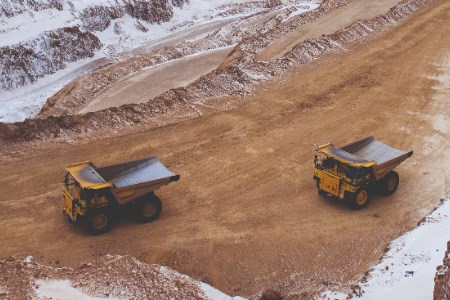The mining industry, an integral driver of economic progress, finds itself at a crossroads amidst a global shift towards more sustainable energy.
This transition signifies a pivotal moment, demanding innovative approaches to balance economic growth with environmental responsibility. Within this new landscape, the role of lubricants emerges with a crucial and frequently underestimated position, having significant influence over the industry’s trajectory. This article unravels the complex dimensions through which cutting-edge lubrication technologies are exerting a profound impact on the mining sector, serving as a keystone for attaining both operational efficacy and ecological sustainability.As the mining industry moves towards aligning with energy transition goals, lubrication stands as a foundation for enhancing equipment performance, minimising wear and tear, and optimising resource utilisation. The use of advanced lubricants and mining practices not only maintains efficiency, but also contributes to the broader goal of mitigating environmental impact. This exploration delves into the intersection of lubrication technologies and mining practices, highlighting their potential to transform the industry. In doing so, the essential role lubricants play in steering the mining industry towards a sustainable and energy-efficient future will be clear.Lubrication challenges in mining operationsThe mining industry navigates complex operational challenges, each presenting difficult obstacles for lubrication systems. Mining equipment operates in environments characterised by extremes – ranging from burning desert heat to frigid places. The machinery struggles with heavy loads, ceaseless vibrations, and the constant threat of contaminants (such as dust, water, and abrasive particles). This section explores the complex challenges inherent in mining operations and examines the crucial role that lubrication plays in overcoming these adversities.For instance, mining operations are notoriously harsh environments for equipment, presenting significant obstacles for traditional lubricants. Some of the key lubrication challenges encountered in mining include:Overloading: Mining equipment is often pushed to its limits, carrying heavy loads and operating at full capacity. This puts immense pressure on lubricants, increasing friction and wear. Inadequate lubrication can lead to component failure, downtime, and costly repairs.Hot and cold extremes: Mining operations can take place in scorching deserts or freezing tundras. Extreme temperatures test the limits of lubricants, causing them to break down, thicken, or thin excessively. This can lead to increased friction, decreased efficiency, and premature component failure.Rain and dust: Mining sites are often exposed to elements, which with relentless rain and dust storms wreak havoc on equipment. Water can wash away lubricants, while dust can contaminate them, leading to abrasive wear and reduced performance.Contamination: Mining environments are naturally dirty, with exposure to rocks, minerals, and other contaminants. These can find their way into lubricants, clogging systems, increasing wear, and causing premature failure.Enjoyed what you’ve read so far? Read the rest of the article and the March Issue of Global Mining Review by registering today for free!
Read the article online at:
This article was published by:
Visit the original article here



